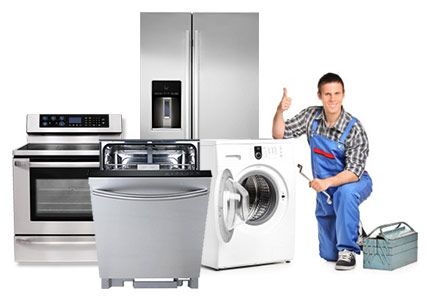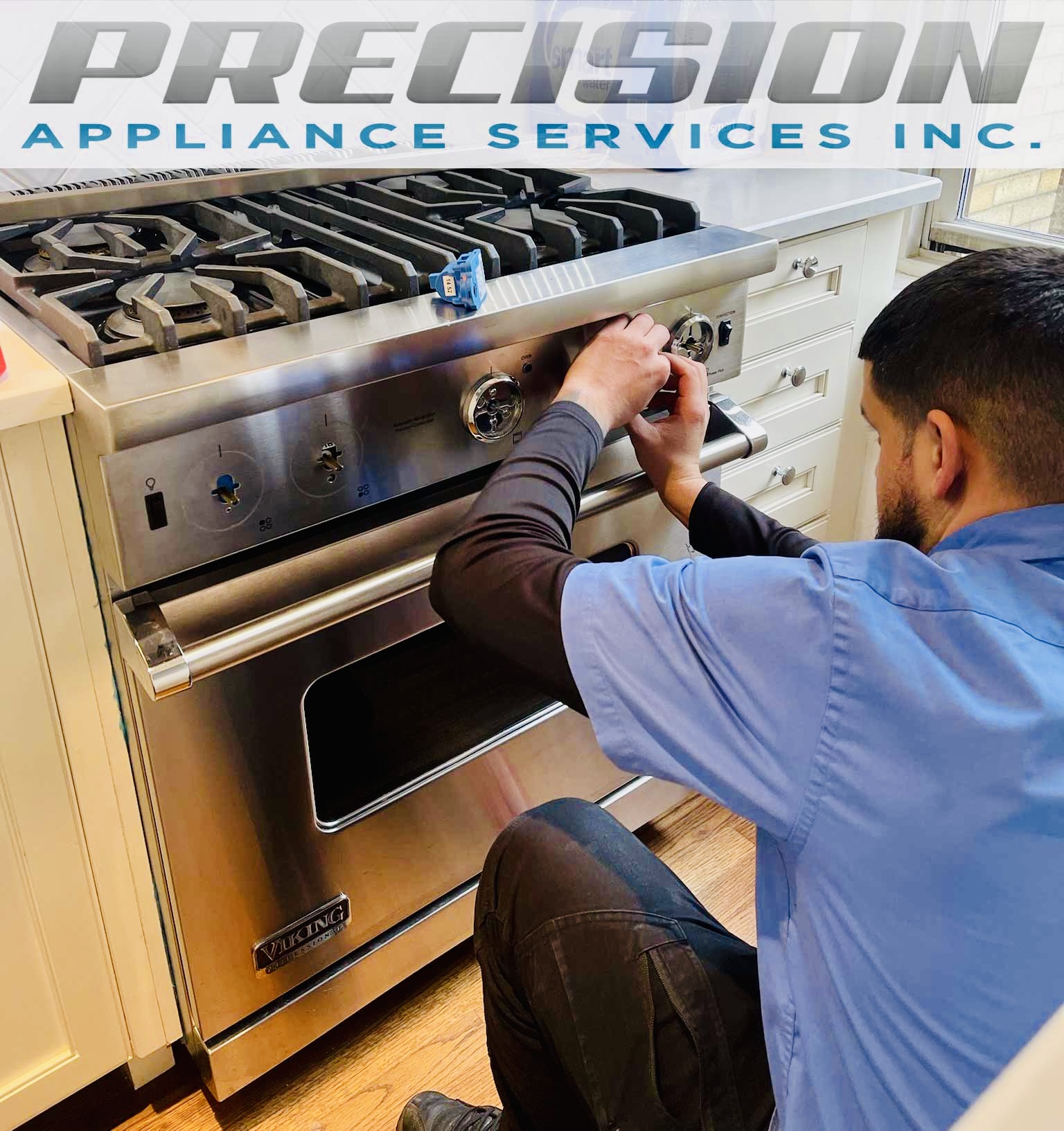Avoid Fires & Boost Efficiency – Dependable Refrigeration & Appliance Repair Service Dryer repair near me
The Ultimate Guide to Understanding Device Repair at Home
When your fridge quits cooling down or your stove refuses to warm, it can feel overwhelming. Comprehending home appliance repair at home can save you money and time. You'll learn to identify signs and symptoms, use necessary tools, and follow a methodical troubleshooting procedure. Yet before you start, there are essential security preventative measures you need to take into account. What are one of the most typical issues, and exactly how can you fix them? Let's explore the basics.
Typical Appliance Problems and Their Symptoms
When your home appliances start acting up, it's crucial to acknowledge the signs at an early stage. Overlooking them can lead to larger issues and expensive repair work. For instance, if your refrigerator isn't cooling effectively, you might notice warm places or condensation creating. This could indicate a stopping working compressor or an obstructed vent.Your dish washer may reveal problems through unclean dishes or uncommon noises during cycles. If you listen to grinding or clanking, it's time to investigate.A washing equipment that won't spin or drain can leave you with soggy washing, recommending a stopped up drainpipe or a malfunctioning pump.Lastly, if your oven's temperature seems off or it takes permanently to pre-heat, you might be managing a faulty thermostat. By remaining alert to these symptoms, you can attend to issues before they rise into significant repair work.
Necessary Devices for Device Repair
When you're taking on home appliance fixings in your home, having the right devices is crucial. Fundamental hand tools like screwdrivers and pliers will help you disassemble and take care of numerous home appliances, while electric screening devices guarantee you're working securely with wiring. Allow's review what you need to obtain started on your fixing trip.
Basic Hand Tools
Having the right devices is crucial for reliable device repair in your home. Start with a trustworthy screwdriver set, consisting of both flathead and Phillips types, as screws are usual in appliance setting up. Pliers are likewise vital; they help with gripping, twisting, and cutting cords or little elements. A pair of needle-nose pliers can reach tight spots quickly. You'll need a good adjustable wrench for tightening up or loosening up nuts and bolts. An energy knife comes in handy for cutting with product packaging or insulation. Ultimately, do not fail to remember a sturdy workbench or surface area to securely organize your devices and components. With these standard hand devices, you'll be well-prepared to tackle most appliance repair work that come your way.
Electric Testing Tools
Alongside basic hand devices, electric testing devices play a necessary function in device repair work. These devices help you diagnose electrical concerns and assurance home appliances work securely. A multimeter is essential; it measures voltage, current, and resistance, enabling you to determine troubles swiftly. A non-contact voltage tester is an additional must-have, letting you find online cords without making straight contact, enhancing your safety. Secure meters are terrific for gauging present flow in cables without disconnecting them, conserving you effort and time. Additionally, circuit testers can swiftly check if outlets are working appropriately. By utilizing these gadgets, you'll simplify your troubleshooting process and improve your repair abilities, making home appliance upkeep a great deal simpler.
Step-by-Step Guide to Diagnosing Appliance Issues
When your appliance breaks down, it can be frustrating, but detecting the problem doesn't need to be overwhelming. You'll find out to recognize common troubles and use efficient troubleshooting methods. Allow's go through the steps to get your device back in functioning order.
Usual Home Appliance Issues

Troubleshooting Strategies Clarified

Repairing Major Cooking Area Appliances: A Closer Look
Have you ever questioned exactly how to tackle common issues with your cooking area appliances? Fixing significant cooking area appliances like refrigerators, stoves, and dishwashing machines can be easier than you believe. Begin by identifying the problem-- whether it's a refrigerator not cooling down or an oven that will not heat up. Often, an easy reset or examining the source of power can resolve the issue.For fridges, clean the condenser coils and examine the door seals. If your stove's not home heating, check the home heating aspect and thermostat. Dishwashing machines may simply need a clean filter or a reset to obtain them back in action. Always unplug the appliance before diving into fixings to guarantee your safety.Don' t neglect to consult the user manual for specific troubleshooting ideas associated with your version. With a little persistence and the right tools, you can confidently deal with home appliance fixings and save money in the procedure!

Repairing Washing Devices: Tips and Techniques
When your washing devices begin breaking down, it can really feel overwhelming, but fixing them does not need to be an inconvenience. Beginning by inspecting the power supply. Confirm the appliance is connected in and the electrical outlet is working. Next off, check the door or cover switch; a faulty button can prevent the device from operating.For washers, if it's not spinning, look for out of balance tons. Redistributing the clothes may address the problem. If your clothes dryer isn't heating, clean the lint filter and check the vent for blockages.Listen for uncommon noises; they can suggest a trouble. If your device is dripping, check the pipes for splits or loose links. Document any type of mistake codes presented on digital screens, as they can assist you in determining the issue. Lastly, get in touch with the customer handbook for certain troubleshooting pointers connected to your version.
Safety And Security Precautions to Take Throughout Repair works
Prior to you start any appliance repairs, it's vital to focus on security to avoid accidents or injuries. Initially, unplug the appliance or shut off the breaker to guarantee no power reaches it while you work. Use shielded tools to lessen the threat of electric shock. Wear safety goggles and handwear covers to safeguard on your own from sharp edges or debris (Lg Dryer repair near me Dependable Refrigeration & Appliance Repair Service).Make certain your work space is neat and well-lit, so you can see what you're here doing. Keep kids and animals far from the location to stay clear of diversions and possible dangers. If you're taking care of gas appliances, be extra mindful; look for leaks before proceeding.Take your time, and don't rush via fixings. If you really feel unpredictable about any action, it's far better to stop briefly and study than to presume. Adhering to these precautions will aid create a more secure atmosphere for your do it yourself device repair work job
When to Call a Specialist for Assistance
How do you understand if it's time to contact a specialist for appliance fixings? If you have actually attempted standard troubleshooting without success, it's a clear indication. As an example, if your device still will not begin or shows unusual noises after resetting it, do not be reluctant to look for expert help.When you discover leaks, smoke, or burning smells, prioritize security and call a pro quickly. These problems can result in more significant damage or pose risks to your home.Also, if your device is under guarantee, speaking to an expert is often the very best course. They can assure that fixings won't void your service warranty, conserving you money in the lengthy run.Finally, if you're unclear or uncomfortable with complicated repairs, it's a good idea to leave it to the experts. Bear in mind, tackling complex concerns without the ideal proficiency can bring about pricey mistakes. Depend on a professional when unsure!
Frequently Asked Questions
Exactly How Can I Prevent Home Appliance Troubles in the Future?
To stop device issues in the future, you must do routine maintenance, look for wear and tear, clean filters, and avoid overloading. Staying aggressive will certainly help extend their life-span and maintain them running efficiently.
What Are one of the most Common DIY Device Repair Work Mistakes?
You might overlook security preventative measures, miss fixing steps, or use wrong devices when attempting DIY home appliance repair work. Hurrying the procedure or overlooking producer guidelines can cause even more substantial concerns and costly errors. Stay individual and notified!
How Do I Know if a Part Needs Replacement?
You can inform if a part needs replacement by looking for unusual noises, leakages, or irregular performance. If the device struggles to run properly or shows noticeable damage, it's most likely time for a replacement.
Can I Use Generic Components for Device Repair Works?
Yes, you can utilize generic components for appliance fixings, however determine they're compatible - Washer dryer repair service Dependable Refrigeration. Common components could save you money, yet they could impact efficiency or longevity, so consider your options thoroughly prior to choosing
What Guarantees Cover Home Appliance Repairs?
The majority of device service warranties cover repair work for making flaws, however they frequently leave out damages from abuse. Examine your warranty terms thoroughly, as some may need using certified service technicians and initial parts for protection to continue to be legitimate.